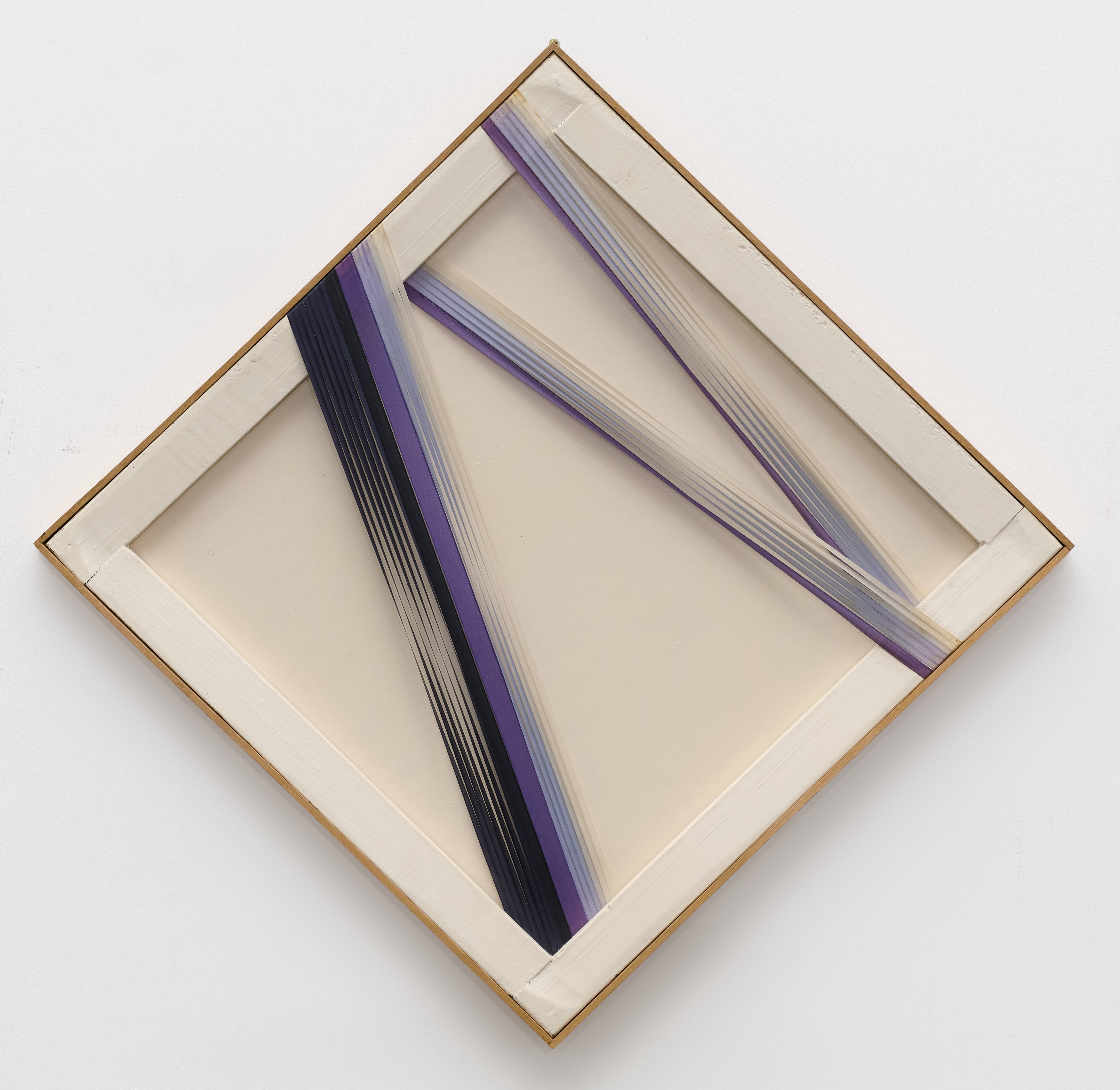Inés Blumencweig
(Buenos Aires, Argentina, 1930 - )
Untitled (B)
1973
Plastic, ribbons, and acrylic on wood in artist's frame
20 x 20 x 1 in. (50.8 x 50.8 x 2.5 cm)
Collection of the Akron Art Museum
Gift of Institute for Studies on Latin American Art (ISLAA), New York
2025.2
More Information
'Untitled B' is a diamond-shaped wall sculpture, comprised of clear, black and purple nylon ribbons stretched across and weaving over and around a canvas, stretched around a wooden structure. The canvas elements and wooden frame evoke the backside of a painting, one that has been flipped over and hung on a corner, to make a diamond rather than a usual square or rectangle. The way the ribbons weave around, over and under the canvas portions and the wooden frame suggests that the artist is opening up the structure of the painting and playing with the different possibilities of perspective, combining qualities of a two-dimensional picture and a three-dimensional object. The nylon ribbons also produce an optical effect; they have a reflective quality that changes as the viewer moves in front of the work. Blumencweig’s body of work in this period played with concepts of rhythm, space, and optics as she sought to challenge the separation between painting and sculpture, expanding painting into the third dimension. Blumencweig demonstrated great technical virtuosity in her mastery of different sculptural materials thanks to her prior training in the decorative arts. At this time, Blumencweig and her husband had immersed themselves in artistic movements happening in Italy, especially Spatialism, led by Lucio Fontana. Fontana was also born in Argentina and eventually settled in Italy. He was one of the first artists to truly explore the dimensional possibilities of painting on canvas, by slashing his compositions with knives and forcefully opening up the picture plane. The influence of Fontana (whom Blumencweig knew personally) can be seen in her work, in the diagonal ribbons that echo Fontana’s decisive diagonal slashes. An additional influence on Blumencweig’s artwork in this period may have been another fellow South American artist, Jorge Eielson. 'Untitled (B)', with its use of plastic ribbons crossing the “canvas,” has a strong resonance with the “Quipus” body of work by Eielson, which Blumencweig may have viewed at the 1964 Venice Biennale. Eielson’s “Quipus” series were inspired by Inca quipus, which are information devices composed of a complex assemblage of knotted strings, where information is conveyed through each segment, knot and color. Overall, Blumencweig’s wall sculpture offers several possible interpretations. A viewer may interpret 'Untitled (B)' as the backside of a painted canvas hung on its side, or perhaps as canvas that has been peeled open and dissected into its component pieces. It can also be interpreted as a more straightforward sculpture, with Op Art elements. Regardless, it is likely to be a work of art that garners interest and multiple interactions by viewers.

